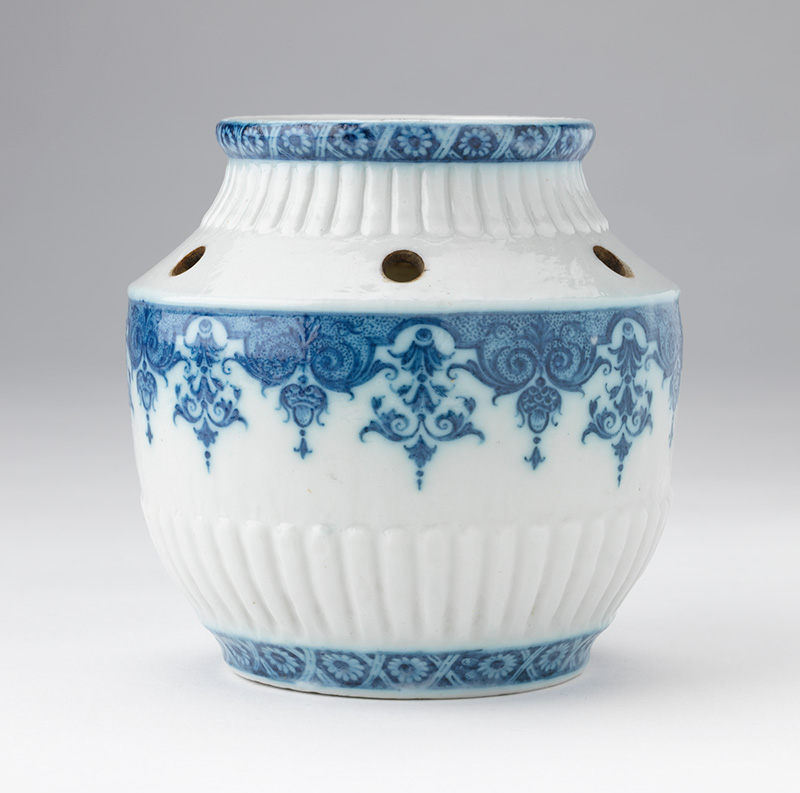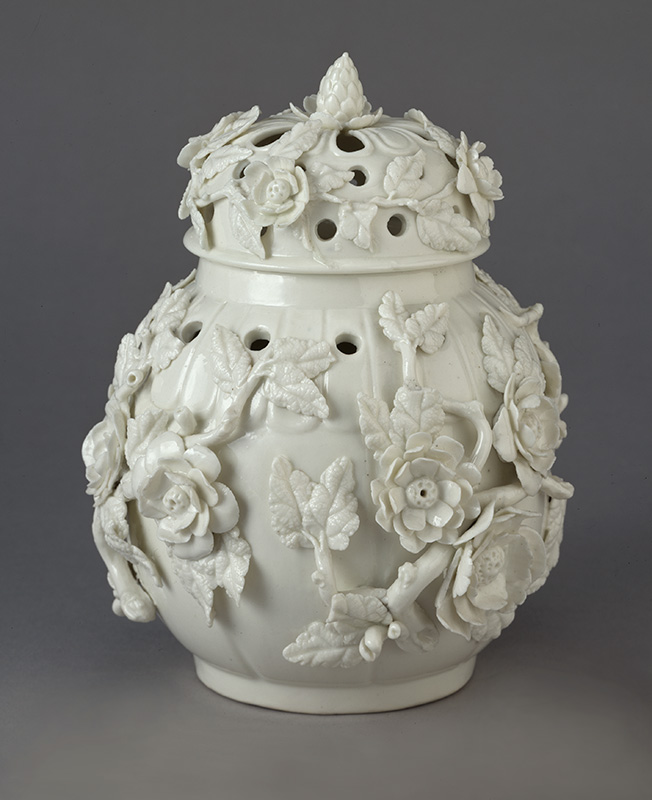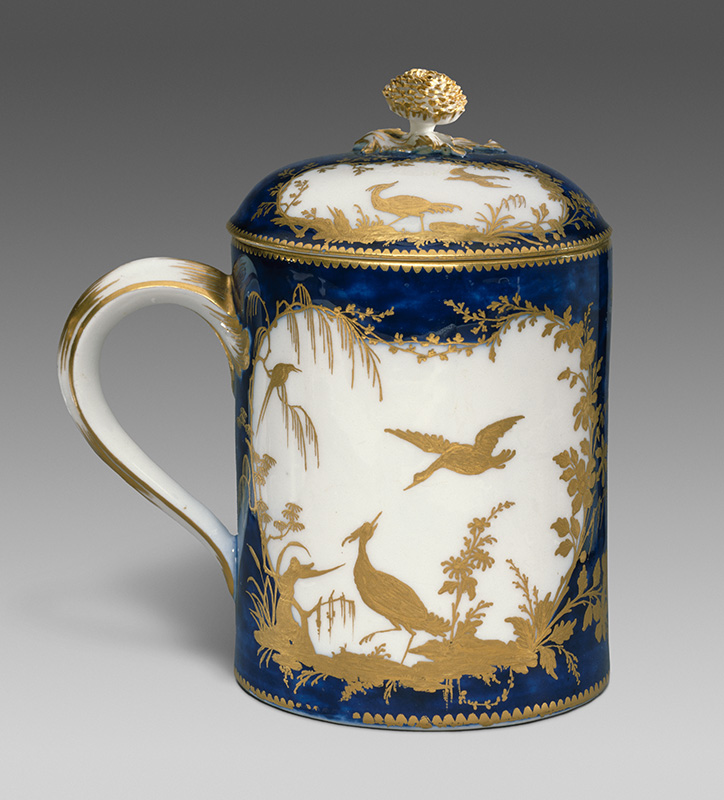Luxury and Passion: Inventing French Porcelain at the Nelson-Atkins Museum of Art
Click on images to enlarge them and view captions.
by William Keyse Rudolph
The Nelson-Atkins Museum of Art celebrates a new acquisition in a two-year focus exhibition. Luxury and Passion: Inventing French Soft-Paste Porcelain uses nearly two dozen works from the Museum’s small but high-quality collections of 18th-century French soft-paste porcelain to trace the development of porcelain in France.
The exhibition’s impetus was the early-2021 purchase of a potpourri jar attributed to the Louis Poterat Manufactory in Rouen, France, made around 1690–94 (figure 1). Acquired from London-based antiques dealer Errol H. Manners, the jar is one of only about a dozen surviving examples attributed to the short-lived enterprise and only the fourth in a museum collection worldwide. In the United States, only The Metropolitan Museum of Art has an example. The jar seems never to have left Rouen and was a longtime resident in the distinguished, early-20th-century ceramics collection of Pierre Derocque.
This rare object, likely based on a silver form, is now the earliest soft-paste porcelain object in the Nelson Atkins collection. Although the Museum collected porcelain and other ceramics both before and after its opening in 1933, its early focus, with few exceptions, tended to be German examples. The systematic acquisition of French porcelain experienced a push in the 1980s and 1990s thanks to newly established acquisition funds and the foresight of then-curator Christina Nelson. The Poterat potpourri jar now allows us to tell a tightly focused, cohesive story about French porcelains, in an exciting new way.
The installation follows eight “chapters” in the history of porcelain in France. Early examples from Chantilly, Mennecy, and Saint-Cloud (figure 2) reveal the next generation of experiments in soft-paste porcelain, which followed the expiration of the Poterat Manufactory’s royal privilege. The works on view suggest the range of stylistic influences that these factories brought to bear upon their wares, from China and Japan, known through imported examples of Asian porcelain and through engravings, to the deutsche Blumen of Meissen.
The largest part of the checklist contains works made at Vincennes and its later incarnation in Sèvres, reflecting the dominance of that factory on the market thanks to royal protectionism. One of the highlights of the Museum’s Vincennes holdings is an exquisite tankard with a blue lapis ground and extraordinarily fine gilded decoration of birds (figure 3).
After the factory relocated to Sèvres, we feature examples that dazzle with the luxurious grounds and the only-allowed-at-Sèvres figure painting and gilding. A dynamic, late 1757 déjeuner with a corbeille (or basket-weave) tray (figure 4) exemplifies the use of Sèvres soft-paste porcelains as diplomatic gifts. The set was sent by Louis XV to Empress Maria Theresa at the conclusion of hostilities between France and Austria.
One display foregrounds biscuit sculpture, the unglazed, soft-paste porcelain figurines that became popular adornments on elite dining tables. The Museum’s holdings feature both mythological subjects, as well as ones taken from popular entertainment. All were designed by Etienne-Maurice Falconet (French, 1716–91) during his tenure as director of sculpture at Sèvres. In their remarkable detail and presence, they reveal how Falconet thought like a sculptor, even while designing for the table.
As a contrast to the monopoly that Sèvres enjoyed, one grouping includes examples of 18th-century faience that expand creative and legal boundaries. Unfettered by the prohibitions on employing gilding due to their use of a tin-enameled earthenware body, faience manufacturers pushed the envelope with productions that rivaled their competitors in porcelain.
Once the French confirmed that kaolin was the ingredient that produced true hard-paste porcelain and located it within their borders near Limoges, Sèvres began to produce hard-paste porcelain wares concurrently with its famed soft-paste lines. The exhibition concludes with several examples of hard-paste porcelain, including a black-ground plate mimicking Chinese lacquer as well as a plate from the early-19th-century Services des arts industriels, a protracted project that occupied Sèvres during the Napoleonic era and into the Bourbon Restoration.
An expanded presentation in the permanent collection galleries complements the exhibition, featuring little-seen examples of German and English porcelain: in particular, selections from the Museum’s nearly three dozen examples of Höchst figurines, many modeled by Johann Peter Melchior (German, 1742–1825) during his tenure as modeler at the rival to Meissen.
Free to the public, as is general admission, the exhibition continues until August 12, 2024.
Dr. William Keyse Rudolph is the Deputy Director, Curatorial Affairs at the Nelson-Atkins Museum of Art.
A print version of this article was published in The Magazine of the Decorative Arts Trust, one of our most popular member benefits. Join today!




